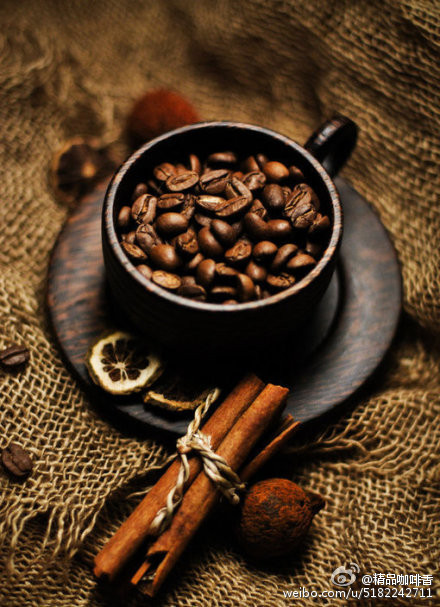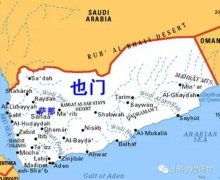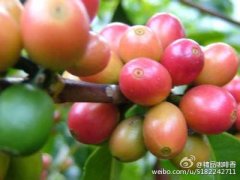Yemeni Coffee-the vanishing Arab Wild

Ethiopia may be the birthplace of arabica, but the first coffee consumed by europeans in the late seventeenth and early eighteenth centuries came from yemen. At that time, African or Arabic coffee was exported from Mocha Port, and Mocha became synonymous with coffee, and Harar, the "City of Walls", became a supporting role instead. However, 300 years later, Yemen coffee is no longer in its former glory. Coffee production has decreased year by year. At present, the annual production is only 12,000 ~ 8,000 tons, which seems to have disappeared from the coffee map. With the current global coffee production of 7 million tons, Yemen accounts for only about 0.17%, which is already insignificant. Yemeni mocha, which used to dominate the world, has become a marginal producing country. Can it not make coffee fans feel distressed?
A trip to Yemen is bound to raise the question: "Was this once a coffee country?" As far as I could see, there was hardly anyone drinking coffee, and the streets were full of people chewing Carter grass to refresh themselves. Yemen's coffee culture, once proud, has changed its tune. There is a Yemeni ballad about coffee that goes like this: "Yemeni coffee, like gems and wealth in the treetops..." This line obviously doesn't fit today's situation.
For the past five years, Yemen's cash crop rankings, coffee has been the last, but khat grass has been dominant. In 2004, Yemen's production of catgrass reached 11 million tons, while coffee fell to 1. 150,000 tons. Yemenis seem to forget coffee exists. Yemenis are accustomed to drinking coffee before breakfast in the morning, and after breakfast or at noon they drink coffee brewed by dried coffee pulp; this kind of fruit-like tea is far more popular than coffee drinkers, and there are far more street vendors selling dried coffee pulp than coffee beans. But looking back at Yemen's coffee history, coffee fans need not give too much blame. After all, Yemenis have a longer history of drinking coffee than drinking coffee. As mentioned in chapter 1 of this book, two far-reaching elders, Shadili, the patron saint of Mocha Port and Dabani, the godfather of coffee in Aden Port, drank coffee in the fifteenth century to refresh themselves. Later, they were lucky enough to be the first to advocate coffee bean drinks with better refreshing effects. From then on, coffee romance began. Yemenis occupy an indelible position in the history of coffee evolution, and now the coffee culture is declining year by year. Yemen's Ministry of Agriculture is also very anxious to hire foreign experts to find out the crux and seek solutions to prevent Yemen's famous fine coffees-Matari, Ismaili, Sharqi, Sanani-from disappearing from the world.
Important Notice :
前街咖啡 FrontStreet Coffee has moved to new addredd:
FrontStreet Coffee Address: 315,Donghua East Road,GuangZhou
Tel:020 38364473
- Prev

World Coffee Tour (2) the country of Mocha-Yemen
The word mocha first emerged in Europe in the 16th and 17th century, because coffee imported from the Arab world was transported from the port of Mocha in Yemen, so at first people used mocha as a synonym for coffee, so until the invention of the mocha pot in the 20th century, people took it for granted that this kind of coffee brewing apparatus was called mocha pot. As for the difference between Ethiopian mocha and Yemeni mocha
- Next

Yemeni farmers abandon coffee
Experts point out that if the trend of farmers abandoning coffee and planting Carter grass is not improved, Yemeni coffee will have no tomorrow. Experts concluded that the reasons for the disadvantages of coffee crops are as follows: drought and water shortage, lack of advanced irrigation systems, increased planting costs, serious diseases and insect pests, cheaper imported coffee and better profits than coffee. It seems that the problem is very complicated. It may be difficult to increase coffee production in Yemen in a short period of time.
Related
- Detailed explanation of Jadeite planting Land in Panamanian Jadeite Manor introduction to the grading system of Jadeite competitive bidding, Red bid, Green bid and Rose Summer
- Story of Coffee planting in Brenka region of Costa Rica Stonehenge Manor anaerobic heavy honey treatment of flavor mouth
- What's on the barrel of Blue Mountain Coffee beans?
- Can American coffee also pull flowers? How to use hot American style to pull out a good-looking pattern?
- Can you make a cold extract with coffee beans? What is the right proportion for cold-extracted coffee formula?
- Indonesian PWN Gold Mandrine Coffee Origin Features Flavor How to Chong? Mandolin coffee is American.
- A brief introduction to the flavor characteristics of Brazilian yellow bourbon coffee beans
- What is the effect of different water quality on the flavor of cold-extracted coffee? What kind of water is best for brewing coffee?
- Why do you think of Rose Summer whenever you mention Panamanian coffee?
- Introduction to the characteristics of authentic blue mountain coffee bean producing areas? What is the CIB Coffee Authority in Jamaica?

